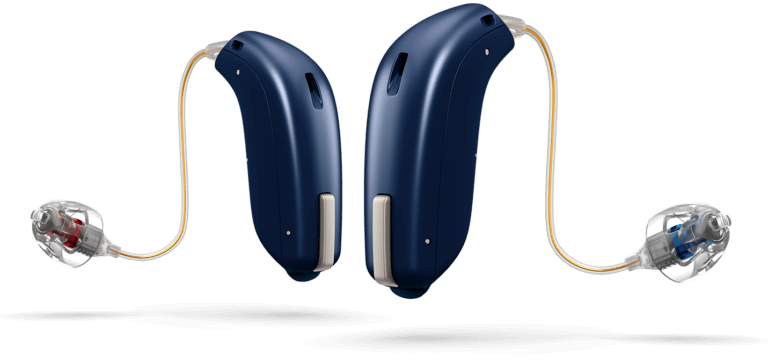Hearing Aid Styles
Styles of Amplification
BTE hearing aids hook over the top of your ear and rest behind the ear. A tube connects the hearing aid to a custom earpiece called an earmold that fits in your ear canal. This type is appropriate for people of all ages and those with almost any type of hearing loss. The advantage of this style is its durability and reliability.
RITE hearing aids are similar to behind-the-ear hearing aids, with the microphone and amplifier in the piece that sits behind the ear, but the speaker or receiver is located in the ear canal. A tiny wire, rather than tubing, connects the pieces. This style of hearing aid has the advantage of being very cosmetic.

CIC hearing aids are similar to BTEs, but they house all three components in a single unit inside the ear canal. CIC units are nearly invisible. Some wearers find them to be more comfortable, while others report that they feel like their ears are plugged.
While CIC hearing aids are nearly invisible, IIC units are completely invisible, sitting deep inside the ear canal out of view. Users must have an ear canal large enough to hold all the components. While cosmetic, a disadvantage of IIC’s as well as CIC’s is battery life.
ITE and canal hearing aids are similar to traditional BTEs, but rather than placing the microphone and amplifier behind the ear, these components are held in a custom molded device that sits in the bowl-shaped area of the outer ear (ITE) or at the entrance of the ear canal (canal style). They are very easy to insert and manipulate, making them ideal for those who suffer from arthritis and other manual dexterity issues.
Hearing Aid Features and Technology
Telecoil
For those who attend theaters and churches that are “looped for the hearing-impaired”, a telecoil feature is handy. A telecoil within the hearing instrument allows your audiologist to program a “theater program” for you. These can also be used with telephones.
Wireless Connectivity
This refers to connecting directly to smartphones and other devices which allow you to stream phone calls, music, and TV to your hearing instruments as well as connect to other devices in your home.
FM Compatibility
For children and students, this feature may be necessary to improve hearing in the classroom.
App Compatibility
Hearing aids can be connected to devices and applications that allow the user to change settings and personalize their listening experience.
Noise Reduction
This technology improves listening while in the presence of background noise. Whether a device uses directional microphones or digital filters with exceptionally fast processing, technology is now available to improve hearing, even in the most complex listening environments.
Feedback Suppression
Hearing instruments have various ways of minimizing the problem of “squealing.”
Tinnitus Solutions
For those who are bothered by ringing in the ears, tinnitus therapy programs are available in some products.

